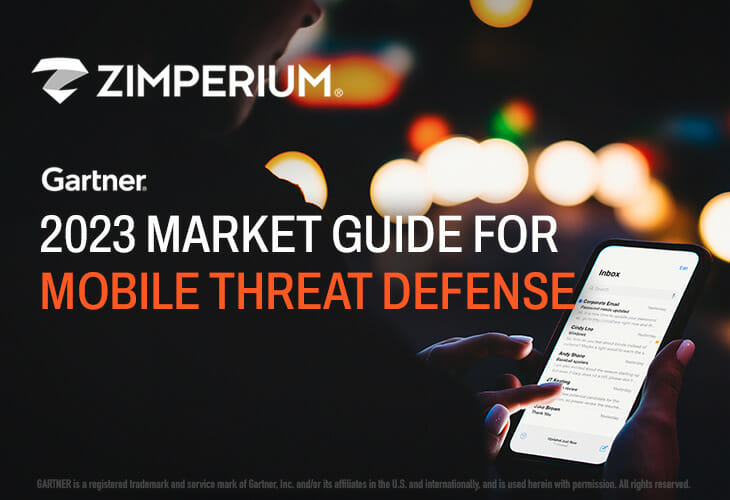
Application Security Posture refers to the overall security status of a mobile application, encompassing the strategies, practices, tools, and protocols implemented to protect the app against various threats and vulnerabilities. A robust application security posture is critical for safeguarding sensitive data, maintaining customer trust, and ensuring compliance with regulatory standards.
What are the Elements of a Strong Application Security Posture?
- Risk Assessment and Management: Identifying potential security threats, such as data breaches or unauthorized access, and developing strategies to mitigate these risks. Risk assessment and management involves regular vulnerability assessments and penetration testing to uncover weaknesses in the app’s security.
- Secure Coding Practices: Implementing best practices in coding to minimize vulnerabilities. This best practice includes adherence to secure coding standards such as OWASP’s Mobile Security Project and ensuring the development team is trained to recognize and avoid common security pitfalls.
- Authentication and Authorization Mechanisms: Develop robust user authentication (like multi-factor authentication) and authorization protocols to ensure only legitimate users can access sensitive functionalities and data.
- Data Encryption and Secure Data Storage: Encrypt data in transit and at rest, using strong encryption standards to protect sensitive information from interception or unauthorized access.
- Regular Updates and Patch Management: Continuously update the app to address newly identified vulnerabilities and promptly apply security patches to close any security gaps.
- Compliance with Legal and Regulatory Standards: Ensuring the app meets the necessary compliance requirements relevant to the industry, such as GDPR for data privacy or PCI DSS for payment processing.
How to Implement a Strong Application Security Posture for Enterprise Mobile Apps
Implementing a good application security posture for an enterprise mobile app involves a multi-faceted approach, encompassing everything from the planning stages to post-deployment. A stringent security posture is essential for developers working on enterprise-level applications, especially in sensitive sectors like e-commerce or banking. Below are key strategies and best practices:
Planning and Risk Assessment:
- Threat Modeling: Start with threat modeling to identify potential threats and vulnerabilities specific to the application. Tools like Microsoft’s STRIDE can be instrumental in this phase.
- Risk Analysis: Conduct a comprehensive risk analysis to prioritize identified security risks based on their potential impact and likelihood.
Secure Coding Practices
- Guidelines and Standards: Adhere to secure coding standards like OWASP’s Mobile Security Project guidelines. Secure coding guidelines include input validation, output encoding, and error handling.
- Code Reviews and Static Analysis: Regularly perform code reviews and use static application security testing (SAST) tools to detect vulnerabilities early in the development cycle.
Authentication and Authorization:
- Strong Authentication Mechanisms: Implement multi-factor authentication (MFA) and biometric verification for sensitive applications.
- Robust Authorization Controls: Ensure authorization is granular and context-aware, with the least privilege access principles.
Data Security:
- Encryption: Use strong encryption for data at rest and in transit. Implementing SSL/TLS for data transmitted over the network is a must.
- Secure Data Storage: Utilize secure storage mechanisms provided by the operating system, like iOS’s Keychain or Android’s Keystore.
API Security:
- Securing APIs: Ensure that all APIs used by the mobile app are secure. This objective includes using tokens for authentication, validating all inputs, and implementing rate limiting.
- Regular Security Audits: Conduct regular security audits of the APIs to check for new vulnerabilities.
DevSecOps Integration:
- Continuous Integration/Continuous Deployment (CI/CD): Integrate security testing tools within the CI/CD pipeline. Tools like Jenkins can be configured for constant security.
- Automated Security Testing: Incorporate automated security testing in the development process, including dynamic application security testing (DAST) and interactive application security testing (IAST).
Compliance and Legal Considerations:
- Regulatory Compliance: Ensure the app complies with relevant laws and regulations, like GDPR, HIPAA, or PCI DSS.
- Privacy by Design: Incorporate privacy considerations from the outset, including data minimization and transparency about data usage.
User Education and Awareness:
- Training: Educate users about security features and best practices. Education and awareness are essential in enterprise settings where the user’s actions can impact security.
Monitoring and Incident Response:
- Real-time Monitoring: Implement real-time monitoring to promptly detect and respond to security incidents.
- Incident Response Plan: Have a well-defined incident response plan that outlines steps to take in case of a security breach.
Continuous Improvement:
- Regular Updates and Patch Management: Regularly update the app and its components to address new security threats.
- Feedback Loops: Implement feedback mechanisms to learn from security incidents and user feedback, continually improving the security posture.
Emerging Technologies and Trends:
- Adopting New Technologies: Stay abreast of emerging technologies like blockchain or AI that can enhance security.
- Adaptive Security Architecture: Implement an adaptive security architecture that evolves with the changing threat landscape.
A good application security posture for an enterprise mobile app is not a one-time task but an ongoing process. It involves a combination of proactive strategies, robust technology, continuous monitoring, and adaptive improvement. By prioritizing security at every stage of the app’s lifecycle, developers can ensure that their enterprise applications are secure, resilient, and trustworthy.
Examples of Application Security Posture in Action
- Retail Banking App: A retail banking app employs end-to-end encryption for data transmission, uses biometric authentication for user access, and regularly undergoes independent security audits to identify and rectify vulnerabilities.
- E-commerce App Security: An e-commerce app might implement robust session management to prevent session hijacking, use encrypted storage for user data, and employ a WAF (Web Application Firewall) to protect against web-based attacks.
Application Security Postures: Emerging Trends and Best Practices
- Machine Learning for Threat Detection: Leveraging AI and machine learning algorithms to identify and respond to security threats in real time.
- DevSecOps Approach: Integrating security practices within the development and operations process, promoting a culture where security is a shared responsibility among all team members.
- Zero Trust Architecture: Implementing a security model based on the principle of “never trust, always verify,” which is particularly relevant for apps handling sensitive financial or personal data.
- Blockchain for Enhanced Security: Using blockchain technology for secure, tamper-proof transactions, particularly relevant for apps involving financial exchanges or sensitive data records.
An enterprise mobile app’s application security posture is a comprehensive framework that ensures the security and integrity of the app throughout its lifecycle. For sectors like e-commerce and retail banking, where data sensitivity and regulatory compliance are paramount, a strong application security posture is not just a best practice but a necessity. It involves a continuous assessment, implementation, and adaptation process to emerging threats and technologies, ensuring the app remains secure, reliable, and trustworthy for its users.
